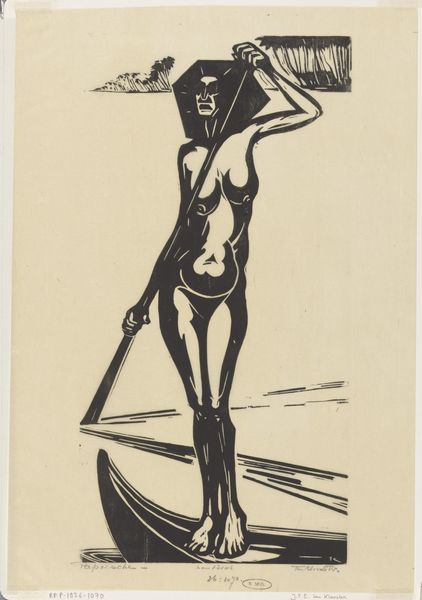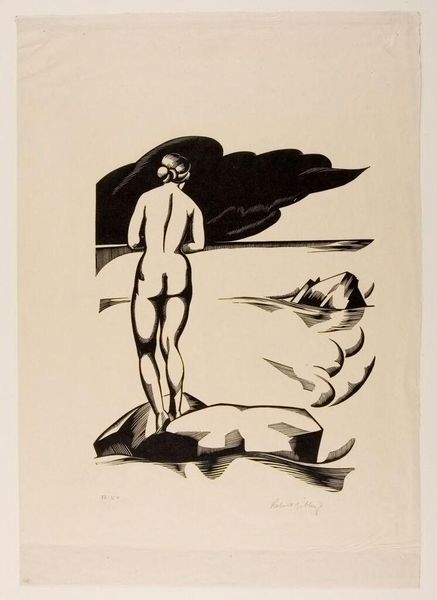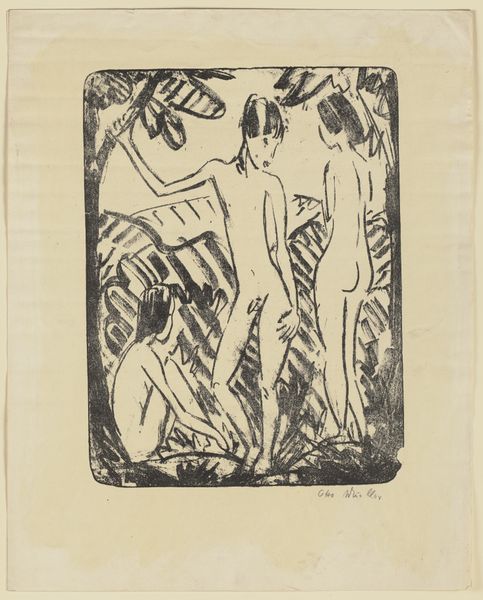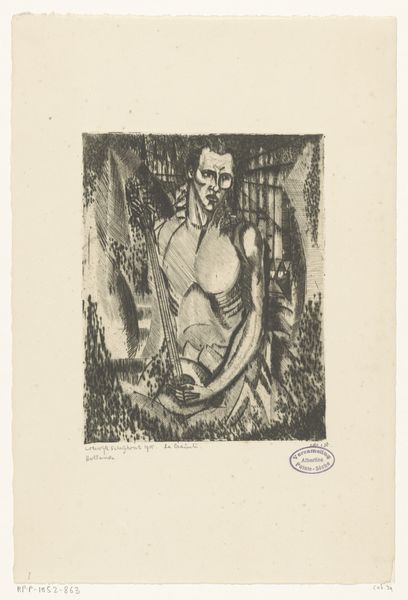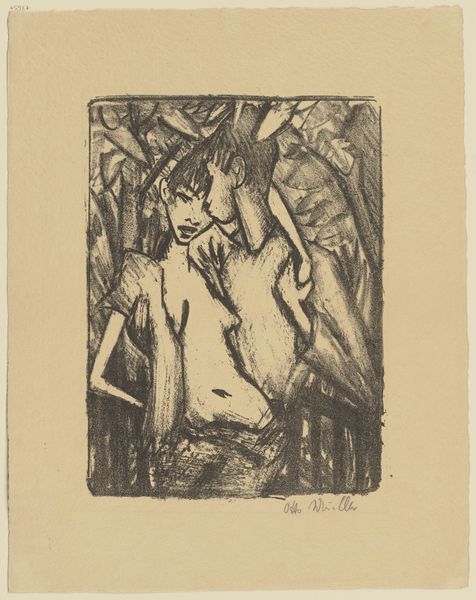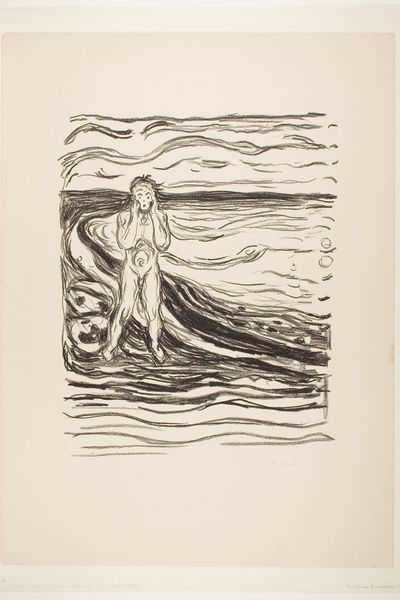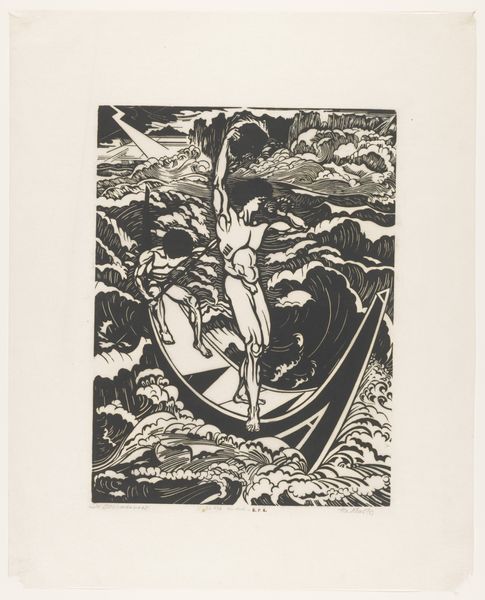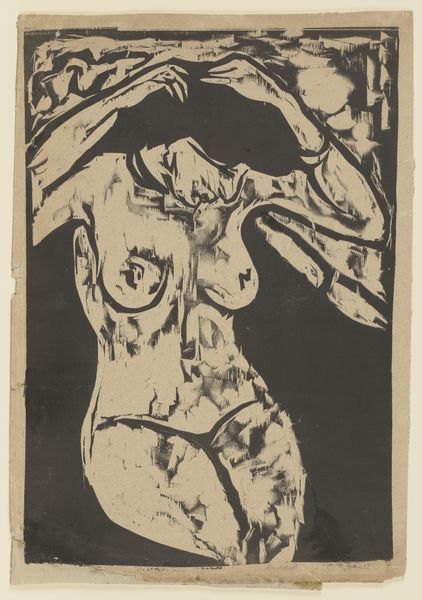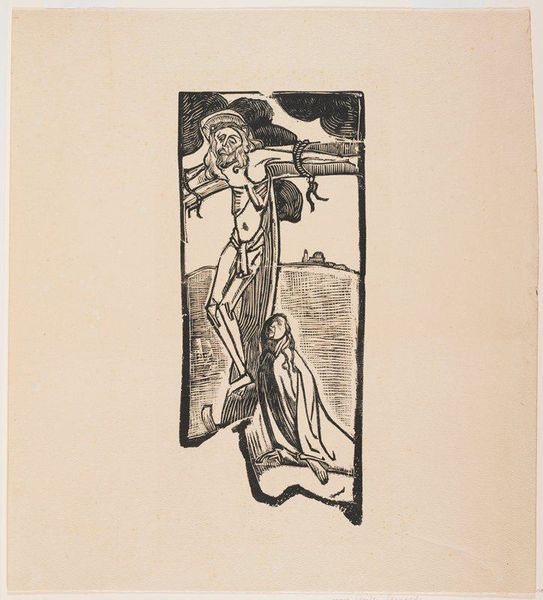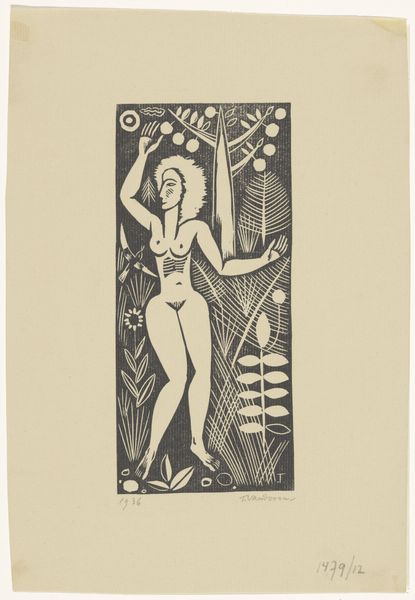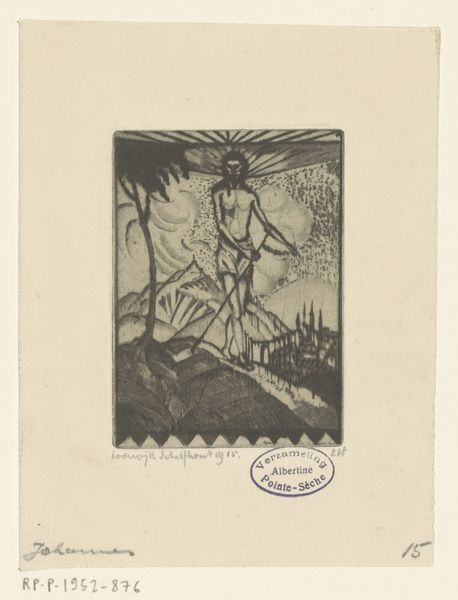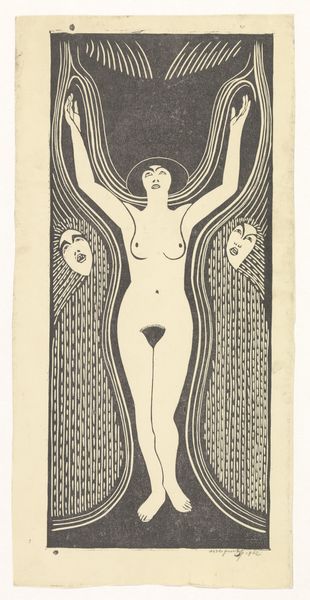
print, linocut, woodcut
# print
#
linocut
#
caricature
#
figuration
#
linocut print
#
expressionism
#
woodcut
#
nude
Dimensions: height 607 mm, width 458 mm
Copyright: Rijks Museum: Open Domain
Curator: What strikes me first is the bold starkness. All hard angles and intense blacks and whites. Editor: Yes, it has that compelling graphic quality, doesn't it? This is "Papoeavrouw", a linocut print created around 1925 by Johannes Frederik Engelbert ten Klooster. Curator: "Papoeavrouw," so, a Papuan woman. Note the fish in her hand, the boat she stands in, the backdrop suggesting an island landscape. Immediately, a narrative of sustenance, of connection to the environment emerges, maybe a symbolic tale related to local tradition or belief. The artist might be evoking ideas related to fertility through these symbols. Editor: Absolutely. And thinking about linocut as a medium—a relatively accessible and reproducible technique— it implies something about the artist's intent. Was he trying to engage a wider audience, democratize art in some way through its accessibility? Linocut's bold lines are great for a bold image. How was the labor divided to make this print, I wonder? Curator: Perhaps, though, in the stark simplification of form we lose some individual expression and cultural nuance; instead it flattens the exoticized idea. There is that risk in such a graphic mode of representation, I'm afraid. And the nudity adds another layer—one of exploitation as an object of fascination for western viewers rather than empathy and humanistic study of subject’s spirit. Editor: I think your read might be a little harsh but fair. Still, I wonder about Klooster's access to materials. Perhaps the limited availability of supplies in a colonial context shaped his practice, pushing him toward this specific medium. We often disregard colonial influences, prioritizing “high art,” but everyday constraints and social conditions shape cultural outputs profoundly. Curator: All very relevant questions! It speaks, doesn't it, to the power of images to hold not just aesthetic beauty, but encoded values, sometimes conflicting, across time. Editor: Precisely! It's important to consider both the artist's hand and the society around them—how resources, access, and perceptions of value informed both production and subject.
Comments
No comments
Be the first to comment and join the conversation on the ultimate creative platform.

